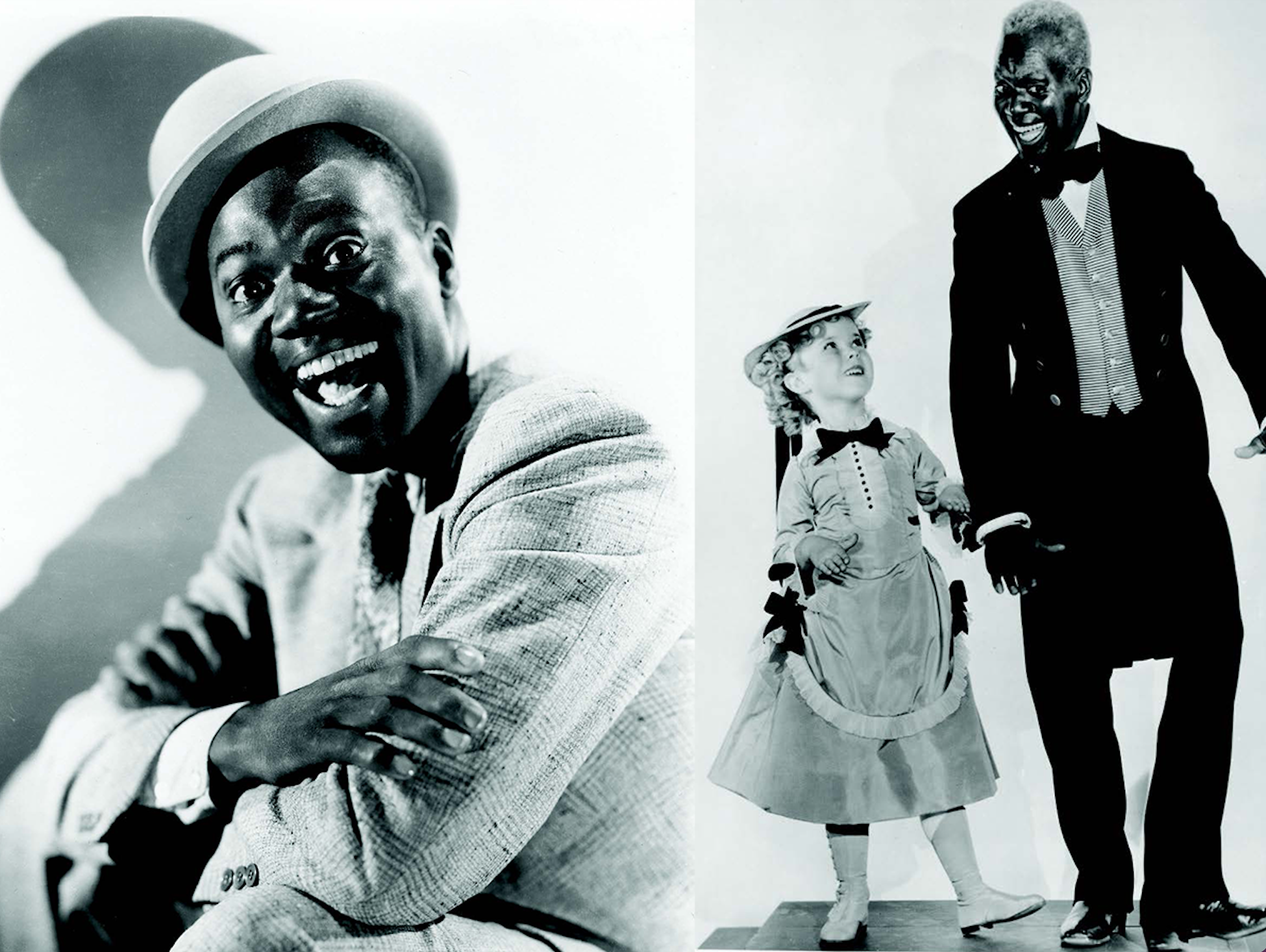
Tap dancing on the balls of one’s feet hardly seems like a novel idea, but the technique is due largely to beloved hoofer Bill “Bojangles” Robinson (1878–1949). He revolutionized the previously popular style of flat-footed shuffling with up-on-his-toes tapping and a swinging rhythm. Born Luther Robinson in Richmond, Virginia, he was given the nickname “Bojangles” as a reference to his quarrelsome nature (from “jangler”), and he began performing as a teenager in the “pickaninny” (that is, African American child) chorus for the white minstrel show The South Before the War. Eager to pursue a professional performance career, Robinson moved to New York around 1900. He soon made the rounds on the vaudeville Keith and Orpheum circuits with fellow dancer George W. Cooper, satisfying the “two-colored” rule, which required blacks to perform in pairs. By 1915, Robinson had moved on to become the first black solo act in vaudeville, known to audiences as “The Dark Cloud of Joy.” Several Broadway shows followed, with films not far behind. His wooden taps, infectious grin and famous generosity set him apart as a remarkable individual, but it is his crisp tonality and ability to break down racial prejudices in performance that have inspired and paved the way for countless other tap dancer.
The legacy lives on:
- In 1989, Robinson’s birthday, May 25, was chosen as National Tap Dance Day.
- The Copasetics Club was formed in 1949 in honor of Robinson, shortly after his death. Robinson’s penchant for the phrase “Everything is copasetic!” (meaning “cool”) inspired the group’s name.
- Robinson claimed to have instructed Eleanor Powell, Florence Mills and Fred Astaire in tap dance. Astaire paid tribute to Robinson with his “Bojangles of Harlem” number in the film Swing Time (1936). Gregory Hines later starred in Bojangles, a 2001 biography of Robinson.
Selected filmography:
Harlem Is Heaven (1932): One of the first movies to ever feature an all-black cast, this film also boasts one of the earliest recorded versions of Robinson’s famous stair dance routine, in which he tapped up and down two flights of five steps joined by a shared platform.
The Little Colonel (1935): Robinson’s staircase duet with Shirley Temple in this film made them the first onscreen interracial dancing couple. It was the first of their four films together.
Stormy Weather (1943): Robinson’s final film featured several other talented dancers: Katherine Dunham and her troupe performed, as did the wildly gifted Nicholas Brothers.
Facts:
- Although he was born Luther Robinson, he reportedly hated his name and asked his brother Bill if they could swap. When Bill refused, Luther used his fists to help him change his mind, and the trade stuck.
- When metal taps became popular in the mid-1920s, Robinson chose to stick with his long-favored split-clog wooden taps. His shoes had a wooden half-sole that was attached loosely from the toe to the ball of the foot, offering greater flexibility and clear tones.
- During his solo vaudeville run at the Palace Theatre, Robinson was usually assigned the second spot on the performance roster, but he frequently ended up going on last—no one wanted to go on after him.
- To publicize his Broadway show The Hot Mikado, Robinson tapped down Broadway.
Check out these additional resources for your students:
Print:
- Tap Roots: The Early History of Tap Dancing, by Mark Knowles, McFarland & Company, Inc., Publishers, 2002
- Tap Dancing America: A Cultural History, by Constance Valis Hill, Oxford University Press, 2010
- “Bill ‘Bojangles’ Robinson,” by Paula Broussard, Dance Teacher, May 2006
- “Fine, All Right, Cool,” by Katie Rolnick, Dance Teacher, December 2012
Video:
Tap Dance History: From Vaudeville to Film, archivist Mark Cantor, Dancetime Publications, 2011 (DVD)
Bojangles, dir. Joseph Sargent, Darric Productions and MGM Television Entertainment, 2001 (DVD)
Web:
- American Tap Dance Foundation: “International Tap Dance Hall of Fame”: atdf.org
- Dance Heritage Coalition: “America’s Irreplaceable Dance Treasures: the First 100”: danceheritage.org





